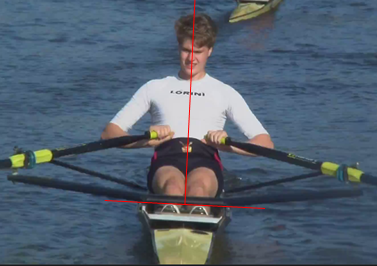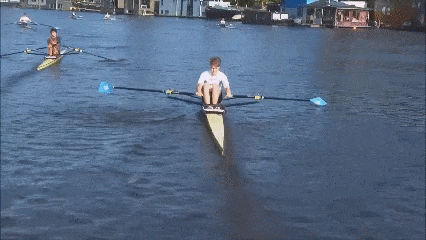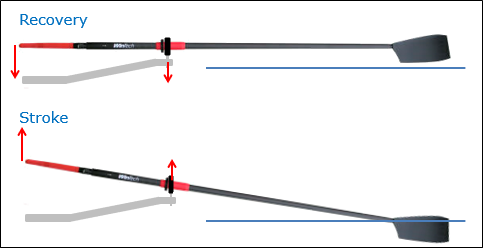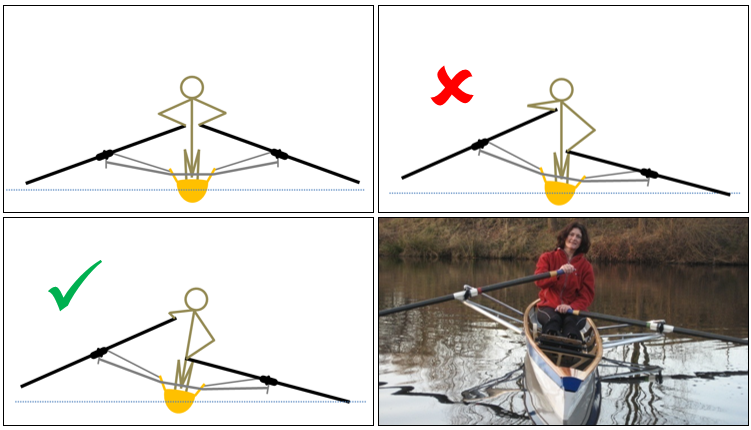|
|
Balance |
Rowing boats have little stability about the longitudinal axis (rolling). The surface of the relatively small fin hardly counteracts this rolling movement. Balance disturbances can be counteracted with the inertia of the trunk(s) of the rower(s). Mass inertia counteracts movement. When the trunk is rotating with boat - similar to a mast on a ship - the roll of the boat is counteracted. This can only be done by fixing the hips laterally (core stability). Also see:  Balancing board. A boat with rowers without core stability will randomly roll to both sides or even wobble violently. This can be seen from the oarlocks that go up and down during the recovery (the boat 'bounces').
Balancing board. A boat with rowers without core stability will randomly roll to both sides or even wobble violently. This can be seen from the oarlocks that go up and down during the recovery (the boat 'bounces').
A correct hand position is essential for making a good draw and to avoid wrist injuries. In sculling (rowing with two oars) and sweep rowing (rowing with one oar) the hand positions are different.


Sculling
A scull boat is only level when the hands are kept close together. They briefly touch each other four times (twice at the draw and twice at the recovery) during the rowing motion. A scull boat can:
- be placed on port side, by holding the handles further apart;
- be placed on starboard side, by pushing the left handle deeper into the boat before the catch and pushing the right handle further up befaore the finish.
Sweep rowing
During the draw, it is the finish hand height (height of the handles) that balances the sweep boat and keeps the boat level. During the recovery, it is the finish hand depth that determines te balance. So:
- During the draw, the balance can be corrected by increase the handle on the side the boat falls to.
- During the recovery, the balance be corrected by pushing the handle on the side where the boat comes up to a little deeper into the boat.

Does the boat lie or fall at the finish to:
- starboard side, then starboard side draws higher and port side pushes deeper at initial away;
- port side, then port side draws higher and starboard side pushes deeper at initial away.
Does the boat lie or fall at the catch to:
- starboard side, then starboard side pushes the handle higher up and levels the boat;
- port side, then port side pushes the handle higher up and levels the boat.
 |
Finish |
 |
Reverse rowing |
This article was translated automatically and is provided to you for free. You are most welcome to improve it!












